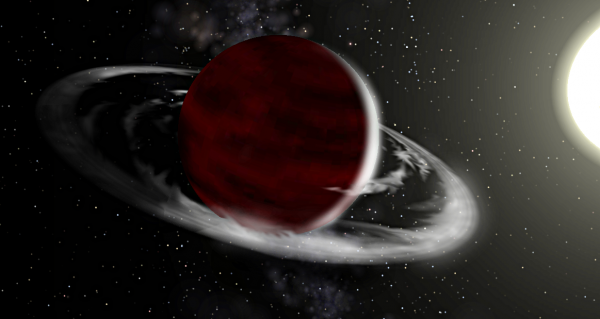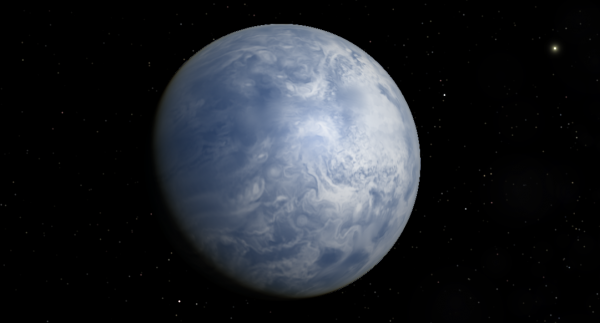BY LETTER
EpistellarJovian Type
Hot, dark gas giants with temperatures between 900 Kelvin and 1400 Kelvin | |
 Image from Steve Bowers | |
| Millennium, a hot epistellar Jovian world with unusual spiral rings caused by a recent encounter with a large comet. The dark clouds on this world are composed of alkali metals | |
The temperatures of these worlds range from 900 to 1400 Kelvin. At these temperatures, alkali metals vaporize, and most commonly sodium condensates fill the atmosphere, darkening it to a grayish-brown. Sometimes titanium and vanadium clouds predominate. The typical albedo would be 0.03. Likely tidal locking does not allow for the formation of cloud banding. As with HyperThermalJovian worlds, lesser-massed EpistellarJovians may experience atmospheric loss due to the high temperatures and strong stellar winds, in some extreme cases leading to the formation of a very faint comet-like tail, and possibly even the eventual desiccation of the world into a Chthonian planet. This atmospheric loss would also form a tenuous envelope of bluish gas about the planet. Example Millenium
 Image from Steve Bowers | |
| Blueglass - a tidally-locked epistellar jovian planet, is hot enough at the epistellar point to produce blue-gray silicate clouds | |
Related Articles
Appears in Topics
Development Notes
Text by John M. Dollan in his Planet Classification List
Initially published on 24 October 2001.
Initially published on 24 October 2001.






